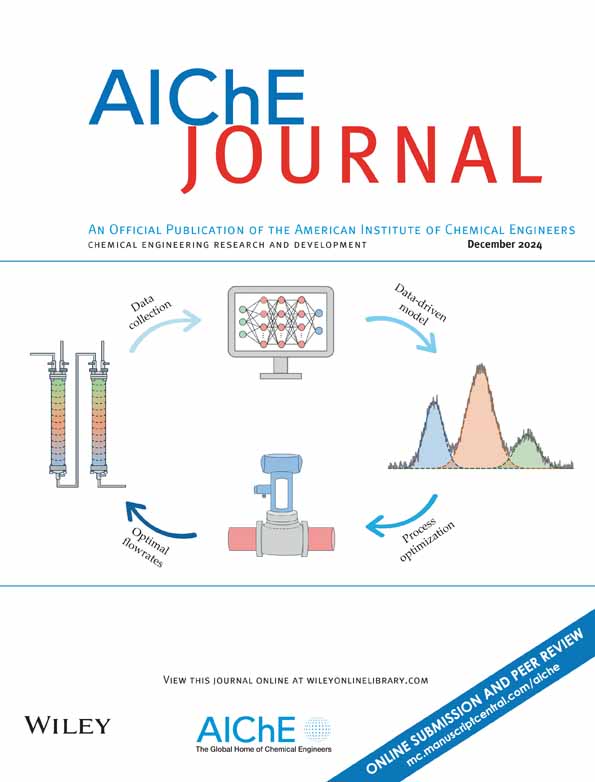Cracking the physical insight of power law models: Bridging the gap between macroscopic kinetics and surface coverages
IF 3.5
3区 工程技术
Q2 ENGINEERING, CHEMICAL
引用次数: 0
Abstract
We propose a methodological framework to quantify the relative abundance of key surface intermediates via analysis of the macroscopic intrinsic kinetic characteristics of gas‐phase data. At the core of this approach is the development of analytical expressions, which link reaction orders and activation energies in macroscopic power law models to the fractional coverage of the non‐observable intermediates. Through the design of an advanced parameter estimation methodology, these relationships were further exploited to develop thermodynamically consistent and mechanistic‐based power law models which could capture the evolution of surface occupancy profiles along the reactor length. The developed framework was tested through in‐silico water gas shift reaction case‐studies; the results indicate the robustness of the approach and the mechanistic insight that can be gained from its application. The methodology proposed in this study could thus be of general value to assist in reaction mechanism analysis, identification of key surface intermediates, and reactor optimization.破解幂律模型的物理洞察力:缩小宏观动力学与表面覆盖之间的差距
我们提出了一种方法框架,通过分析气相数据的宏观内在动力学特征来量化关键表面中间产物的相对丰度。这种方法的核心是开发分析表达式,将宏观幂律模型中的反应阶数和活化能与不可观测中间产物的分数覆盖率联系起来。通过设计先进的参数估计方法,进一步利用这些关系开发出热力学上一致的、基于机理的幂律模型,该模型可以捕捉沿反应器长度方向的表面占据剖面的演变。通过对实验室内水气变换反应的案例研究,对所开发的框架进行了测试;结果表明了该方法的稳健性以及从其应用中获得的机理洞察力。因此,本研究提出的方法在协助反应机理分析、关键表面中间产物识别和反应器优化方面具有普遍价值。
本文章由计算机程序翻译,如有差异,请以英文原文为准。
求助全文
约1分钟内获得全文
求助全文
来源期刊

AIChE Journal
工程技术-工程:化工
CiteScore
7.10
自引率
10.80%
发文量
411
审稿时长
3.6 months
期刊介绍:
The AIChE Journal is the premier research monthly in chemical engineering and related fields. This peer-reviewed and broad-based journal reports on the most important and latest technological advances in core areas of chemical engineering as well as in other relevant engineering disciplines. To keep abreast with the progressive outlook of the profession, the Journal has been expanding the scope of its editorial contents to include such fast developing areas as biotechnology, electrochemical engineering, and environmental engineering.
The AIChE Journal is indeed the global communications vehicle for the world-renowned researchers to exchange top-notch research findings with one another. Subscribing to the AIChE Journal is like having immediate access to nine topical journals in the field.
Articles are categorized according to the following topical areas:
Biomolecular Engineering, Bioengineering, Biochemicals, Biofuels, and Food
Inorganic Materials: Synthesis and Processing
Particle Technology and Fluidization
Process Systems Engineering
Reaction Engineering, Kinetics and Catalysis
Separations: Materials, Devices and Processes
Soft Materials: Synthesis, Processing and Products
Thermodynamics and Molecular-Scale Phenomena
Transport Phenomena and Fluid Mechanics.
 求助内容:
求助内容: 应助结果提醒方式:
应助结果提醒方式:


